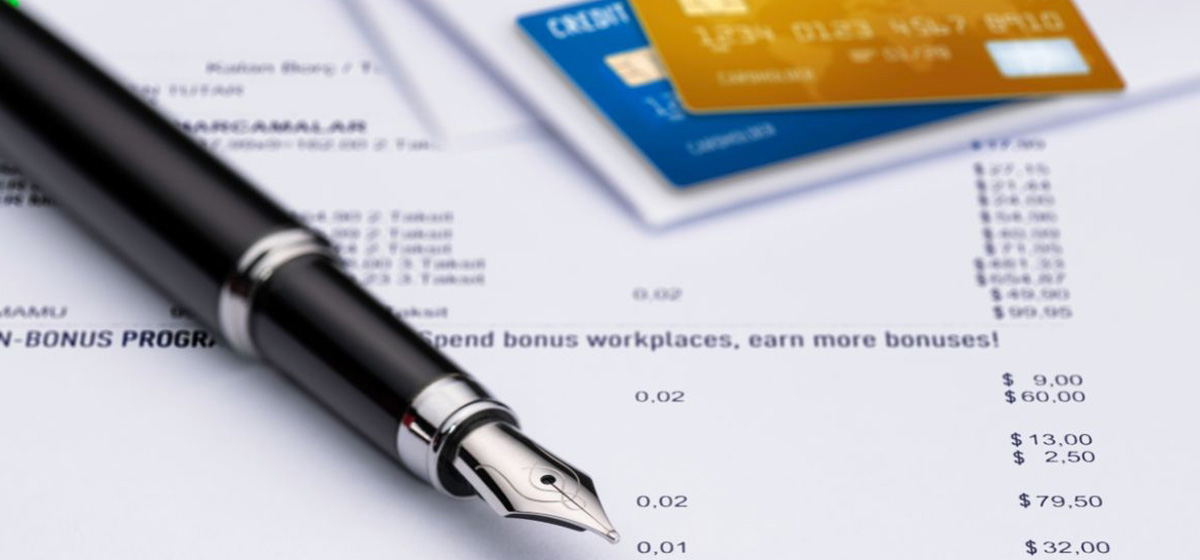Bank statements are official documents sent by banks to account holders every month. These documents summarize all the transactions that occurred during that period. Bank statements include bank account information (account numbers and a detailed list of deposits and withdrawals). Account holders can review their monthly statements to track expenses and spending and monitor any fraudulent charges or mistakes.
Customers can access bank statements on their financial institution’s website. Another way to get them is by requesting to have a monthly paper statement delivered to your home. Banks usually send monthly statements to account holders on specific dates. Additionally, transactions on statements typically are in chronological order.
What is a Bank Statement?
A bank statement is a document banks distribute once a month to customers. It lists all the transactions that impact a bank account. The statement includes information such as the beginning balance in the account, funds withdrawn, interest earned on the account, and the ending cash balance. Bank statements show the cumulative amount of cash in the account (net of all the preceding transactions) by the end of each day in the reporting period. Some banks still supply printed statements along with a set of images of all cleared checks.
What Information can be Found on a Bank Statement?
Bank statements list details of all the transactions you made in a month with your account. When you look at the statement, you can see all the money that has come into and out of your account in one place. With this information, you can make better financial choices and manage your savings.
Bank statements usually include the following information:
Name: Banks must know which person must receive the information. It is important to have the proper name on bank statements. Hence, an individual gets the information that applies to them. Accurate spelling is a crucial part of this.
Account Number: Account numbers make it easier for tellers and representatives to look up your information. Also, if there is ever an issue with one of your bank accounts, knowing the account number can make solving it more efficient. Everyone with a bank account has a unique account and routing number. Do not share this information with anyone since it is private.
Address: Banks may want to send mail to someone about important changes to their account or other information. Ensure you have the correct address on file so that banks can send you mail. Additionally, banks need your information to confirm your identity and proceed with any requests you make to your account.
Bank Branch: The bank branch is listed on bank statements to make it simpler to track payments and receivables. Branches play a huge role in brand engagement, offering different services and providing essential everyday banking needs. Bank branches are banks’ physical locations and provide face-to-face service for bankers. They give additional help people may not be able to find online.
What are the Requirements for Obtaining a Bank Statement?
The requirements for obtaining a bank statement vary based on the institution. In the modern era, banks have statements readily available to download as PDFs. The steps for finding your statement may vary based on the institution. But, statements are generally available online in your account. To obtain a bank statement, you must have an account at the institution. The bank has your information on file, so you do not have to do any extra steps to access one. If you prefer to receive a statement by mail, you can request this option from the bank. Typically, banks mail your statements to you unless you opt for electronic delivery.
How to Get a Bank Statement?
You can get a bank statement through your financial institution’s website. Or, if you prefer to receive a paper copy, you can request to have one delivered to your home.
If you prefer to receive statements electronically:
- Go to your financial institution’s website
- Enter your log-in credentials
- Go to your documents and information section
- Search for the options on how to receive statements
- Choose to receive electronic documents
The process is the same for paper statements, except you choose to have those mailed to your home.
Who can Get a Bank Statement?
Anyone with an account at a financial institution can get a bank statement. They are normally sent to account holders every month listing all of an account’s transactions in a single month. Bank statements are valuable since they contain sensitive information such as account numbers and data on deposits and withdrawals. You can access one at any time by visiting your financial institution’s website. You can also request to receive paper statements.
Is it Possible to Get a Bank Statement Online?
Yes, it is possible to get a bank statement online. You can access them from your financial institution’s website, and the mobile app. You must log in to your account to view and access your information. Once you are in your account, search for the documents and information section. You will see several lists from the past several months with details of various transactions and other dealings from a specific month. Viewing these statements can help you stay on track of your finances.
Why do Accountants Request Bank Statements?
Accountants need bank statements to correct any potential errors. For example, sometimes expenses are recorded twice, or transactions are deleted by mistake. Additionally, transfers between bank accounts may be coded incorrectly, or payments could be allocated to the wrong account. The more transactions that take place, the more likely it is for errors to occur. Moreover, when accountants prepare your annual financial statements and tax returns, they have to check that the figures in the accounts tie into your bank accounts. This process is known as “third-party verification.”
What can a Bank Statement be Used for?
People should check that the information in their bank records aligns with their records of the transaction. Any discrepancies at the bank (a transposed number in a check or a deposit) can occur. In this case, the bank should be contacted as soon as possible to make an adjusting entry. Also, there is a possibility that the error is in the recipient’s records, meaning that the individual should revise the company’s accounting records to fix the error. This review process is an excellent way to detect fraudulent behavior by a third party, such as illicit withdrawals from the bank account. The procedure is called bank reconciliation. Besides verifying information, bank statements can also be used for applying for loans, getting a divorce, or for tax purposes.
How to Use a Bank Statement?
Bank statements can be used for various reasons. Some uses include:
- Staying aware of your financial transactions and status
- Clarifying that each item listed on a bank statement is accurate to help prevent any errors from resulting
- Avoiding consequential action taken against your account
- Accessing documentation on how to get a loan in the future
You can use bank statements at any time for various situations. If you believe an error has occurred or want to examine something closely, it is ideal to look at your bank statements. They will provide a clearer picture of what you need to know.
When is it Appropriate to Examine a Bank Statement?
It is appropriate to examine a bank statement whenever you want to inform yourself of your financial choices over certain periods. Bank statements are an excellent resource for staying on track of finances and correcting any possible errors made by financial institutions. There is no inappropriate time to examine a bank statement. You do not have to look at one every day, but it is good to develop a habit of regularly checking them as they are available to you.
What is the Difference Between a Cash Book and a Bank Statement?
Cash books record all transactions for cash, checks, money orders, or postal orders. Cash books are debited every time these items are deposited in the bank. In many businesses, two or three-column cash books note any transactions made through the account. Meanwhile, bank statements are the lists of entries to account holders that have been created in their personal accounts. Banks maintain these documents. They use accounting machines or computers to keep their accounts.
What is the Difference Between a Bank Statement and a Statement of Account?
Bank statements list all your monthly transactions. They occur over a set period and include deposits, withdrawals, and the beginning and ending balance for the period. Vendors issue statements of accounts to clients. They highlight all the financial transactions between the two businesses over a particular period. These statements typically occur every month and may reflect a zero balance. If this does not happen, they serve as a reminder to clients that money is due. However, statements of accounts are not invoices and usually arrive in the mail in PDF format.
How to Make a Bank Statement?
Banks generate bank statements, while individual account holders do not. They use computers or processing machines to create these personal documents for people to review and keep. You have the option if you want to make a personalized, unofficial bank statement. There are templates you can use to make one that helps keep track of finances on your end. This can come in handy when settling disputes arising on official bank statements. Ensure you include information such as the name and address of the account holder, period of account statement, the opening balance, and total deposits.
Is it Safe to Give a Bank Statement?
Yes, it is safe to give a bank statement to credible companies for any purposes you have. Bank statements help verify the information and make it easier to conduct business. Whenever you issue bank statements, ensure you do not only issue an electronic version. Send a paper copy so any errors or discrepancies can be cleared up if suspected. Do not send bank statements to unverified sources or people you do not know well. Bank statements contain lots of personal information, and you can put your bank account at risk if it goes to an unreliable source.



